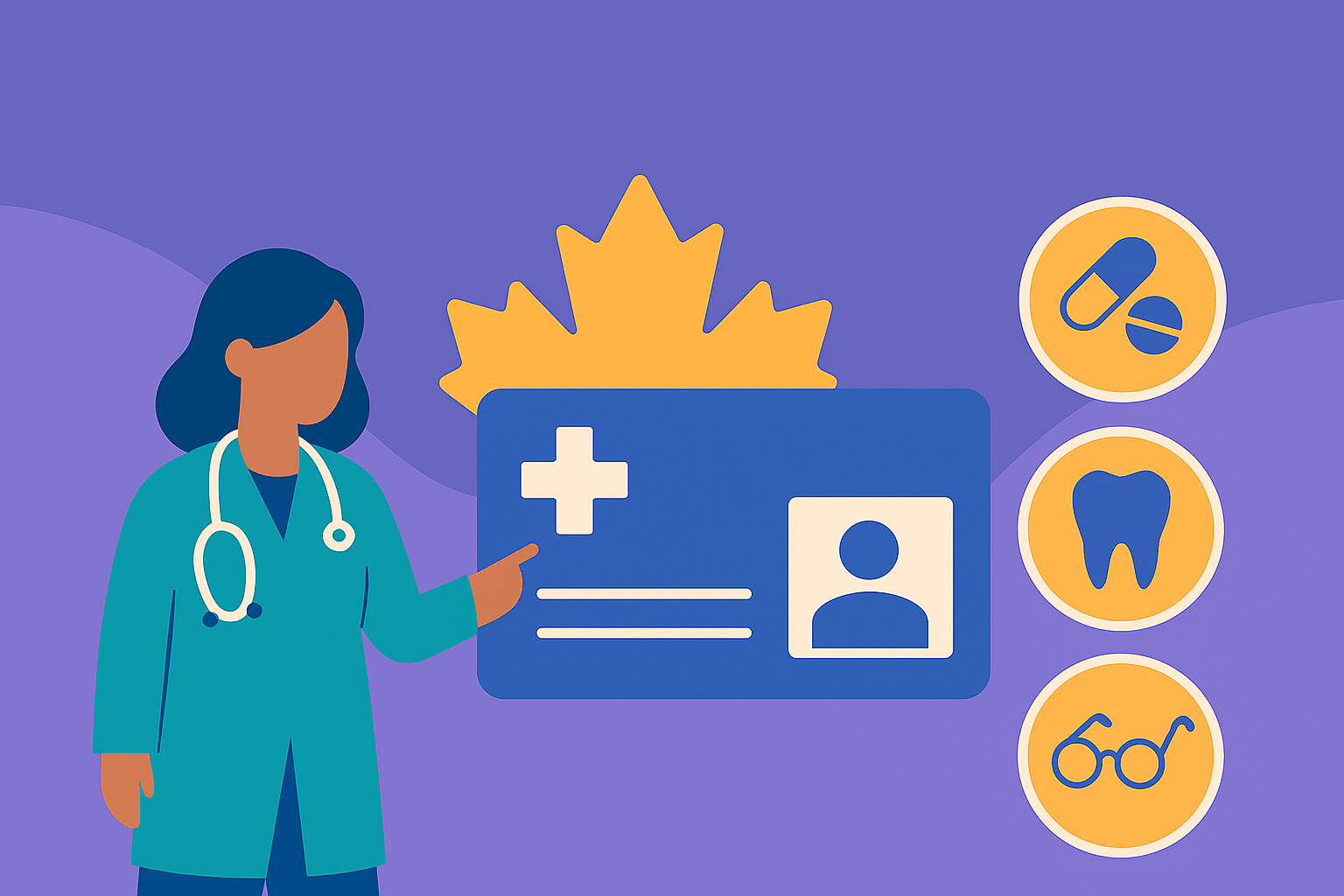Dental health is a key part of overall well-being, but for many Canadians, it is also one of the most expensive areas of healthcare. While Canada’s provincial health plans cover doctor visits and hospital care, dental care is largely left to individuals to pay for themselves. That is where dental insurance comes in, helping to make routine checkups, cleanings, and unexpected treatments more affordable and predictable.
It has been shown that people who have dental insurance tend to have better oral health. When you know your visits are covered, you are more likely to book regular cleanings and catch issues early before they become costly problems.
If you are self-employed, retired, or simply not covered by an employer plan, private dental insurance can help you stay on top of your oral health while controlling your costs.
What Is Dental Insurance and How Does It Work?
Dental insurance helps cover the cost of maintaining healthy teeth and gums. You pay a monthly or annual premium, and in return, your plan covers a portion of your eligible dental expenses, from routine cleanings to more involved treatments such as fillings, root canals, or crowns.
Most plans cover preventive care (cleanings, exams, X-rays) at or near 100 percent, while basic and major treatments are covered at a set percentage. This structure makes your dental costs more predictable and encourages regular care instead of waiting until there is pain or damage.
In short, you pay a little each month to avoid paying a lot later, both financially and in terms of your health.
Key Dental Insurance Terms (Explained Simply)
Why Dental Insurance Matters
Having dental insurance is not only about saving money. It is about prioritizing your health. Here is how coverage makes a difference:
1. Encourages Preventive Care
People with dental insurance tend to visit the dentist more frequently because they can, and because they want to use the coverage they are paying for. Regular cleanings and exams catch issues such as cavities or gum disease early, preventing expensive and painful problems later.
Insurance helps you stay proactive, not reactive, with your oral health.
2. Reduces Out-of-Pocket Costs
Dental care can be expensive, especially for families or retirees. A filling can easily cost $200 to $400, a root canal $800 to $1,200, and a crown $1,000 or more. Dental insurance absorbs much of that cost, ensuring you are not left covering large unexpected bills.
3. Supports Overall Health
Your mouth is connected to your whole body. Research links oral health to heart health, diabetes, and even cognitive decline. Regular dental care, encouraged by insurance coverage, can support broader well-being.
4. Makes Dental Care More Predictable
Insurance gives you financial stability. You know your coverage limits, reimbursement percentages, and annual maximums, so you can plan treatments and costs with confidence.
Types of Dental Insurance in Canada
There are several ways Canadians can access dental coverage.
If you do not have access to an employer plan, a private plan through Aeva can fill that gap and help you maintain continuous care.
What Dental Insurance Typically Covers
While each plan is different, here is a general breakdown of coverage levels:
Coverage percentages may vary by insurer and plan level. You can compare options side by side in minutes on Aeva.ca to find the right balance between affordability and benefits.
How Reimbursement Works
Dental insurance plans in Canada usually base their reimbursement amounts on the provincial dental fee guide, which is a list of recommended prices for each dental procedure published each year by the provincial dental association. If your dentist charges more than the fee guide amount, you will typically pay the difference out of pocket. Fee guides vary by province, so the same procedure may cost more or less depending on where you live. Understanding this helps you compare dentists and avoid unexpected costs.
How Much Does Dental Insurance Cost in Canada?
The cost of private dental insurance depends on your age, health, and the plan’s depth of coverage.
Plans can also differ by province and insurer. Aeva makes it simple to compare Canadian dental insurance plans online so you can see what fits your budget and lifestyle.
How to Make the Most of Your Dental Insurance
Here are a few smart habits that help you maximize your coverage and keep your smile healthy:
- Use your preventive benefits. Schedule both covered cleanings each year to stay ahead of potential issues.
- Plan around your annual maximum. If you need major work, ask your dentist to help schedule treatments across policy years to optimize coverage.
- Request a cost estimate in advance. Have your dentist submit a pre-determination of benefits to your insurance company before major procedures. You will receive a written response showing exactly what is covered.
- Compare dental providers. Prices for the same procedure can vary between dentists, so it pays to shop around for quality and value.
- Submit claims promptly. This helps avoid delays in reimbursement.
- Stay consistent with visits. Regular checkups make the most of your coverage and support better long-term oral health.
When you use your coverage consistently, you are more likely to maintain healthy teeth and gums and avoid expensive surprises.
Common Myths About Dental Insurance
Is Dental Insurance Worth It?
For most Canadians, the answer is yes, especially if you do not have workplace benefits or are moving into retirement.
Dental insurance helps you:
- Stay consistent with preventive care
- Avoid surprise costs
- Protect your long-term oral health
- Keep more money in your pocket when big treatments arise
It is not just a financial tool. It is a motivator for better health habits.
If you are paying for coverage, you are more likely to use it, and that means cleaner, healthier teeth over time.
Finding the Right Dental Plan
The best plan depends on your age, dental history, and how often you visit the dentist.
Through Aeva.ca, you can:
- Compare top dental insurance plans in Canada
- Get quotes in minutes
- Review what each plan covers side by side
- Apply online when you are ready
It is fast, transparent, and built to help Canadians find affordable coverage without the jargon.
Bottom Line
Dental insurance in Canada makes it easier to take care of your teeth and your health without financial stress. Whether you are self-employed, recently retired, or just looking for peace of mind, private dental insurance helps you stay consistent with preventive care and better manage your costs.
It is one of the simplest ways to protect your smile and avoid big bills down the road.
You can start comparing plans right now and see which ones fit your needs directly on Aeva.ca.
Subscribe to our newsletter
Join our exclusive mailing list and get the latest stories from the Aeva team



%20(2)-min.png)